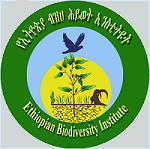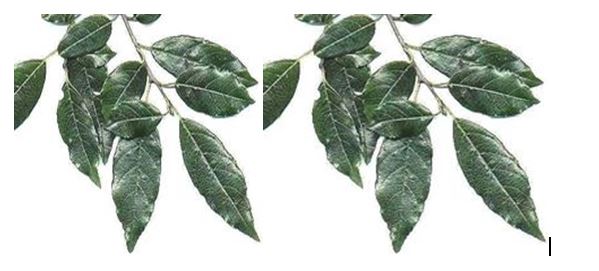 Call for Access and Benefit Sharing of Rhamnus prinoides (Gesho)
Call for Access and Benefit Sharing of Rhamnus prinoides (Gesho)
|
Genetic Resource Access and Benefit Sharing Directorate Ethiopian Biodiversity Institute Call for Access and Benefit Sharing of Rhamnus prinoides (Gesho) Taye Birhanu Belay Biotechnologist
Rhamnus prinoides (Gesho)
1. Introduction Rhamnus prinoides L’Herit, common name dogwood, Amharic name Gesho, family Rhamnaceae, is a widespread plant species in East, Central and South African countries. It is a native plant to Ethiopia, Botswana, Eritrea, Lesotho, Namibia, South Africa, Swaziland, Uganda and exotic to Kenya. It also occurs in Cameroon, Sudan and Angola. The African dogwood, R. prinoides (Rhamnaceae) is a dense shrub or a tree that grows up to 6 m high (Berhanu Abegaz and Teshome Kebede, 1995; Hailemichael Alemu et al., 2007; Afewerk Gebre and Chandravanshi, 2012).
Rhamnus prinoides is a shrub or tree to 6 m, unarmed; branchlets sparsely crisped pubescent. Leaves alternate, glabrous but for scattered appressed hairs on midrib; petiole 3-17 mm, sparsely pubescent; stipules falling off quickly; lamina ovate, elliptic or oblong, 3-12.5 x 1.5-4.5 cm, glandular serrulate; apex acuminate to acute; base cuneate to rounded. Flowers yellowish green, solitary or in 2-5flowered axillary fascicles; pedicels 5-15(-20 in fruit) mm, sparsely pubescent, drooping in fruit. Receptacle puberulous. Sepals 5, acute, 2 mm long; petals usually absent or 1 mm long; filaments 1 mm; ovary 3(-4)-locular, style 1 mm. Fruit subglobose, 5-8 mm in diameter, turning through red to blackish purple; stones obconic (Hedberg and Edwards, 1989).
Rhamnus is found in upland forest (usually on edges or in clearings and former cultivations), riverine forest, secondary forest and scrub, also widely planted in hedges and gardens (Hedberg and Edwards, 1989).
The Gesho plant (R. prinoides), which is different from hop (Humulus lupulus) is widely cultivated in Ethiopia and is available dried in the local market (Haimanot, 2011). Leaves and stems are good sources of a healthy diet; and they are not exposure routes to some metal contaminations under the current existing situation (Nagari and Alemayehu, 2013). The leaves and stems of this plant are used to impart the characteristic bitter flavour to domestically brewed beverages known as ‘Tella’ and ‘Tej’ and it is estimated that well over 5 million people consume these beverages daily (Berhanu Abegaz and Teshome Kebede, 1995).
2. Industrial application 2.1 Natural dye yielding Leaves of Rhamnus prinoides (Rhamnaceae) is reported potential dye yielding plant and reasonably good dyeing with higher color strength values reflecting in direct affinity to cotton (Abera Kechi et al., 2013). 2.2. Brewery According to Berhanu Andualem (2014), Rhamnus prinoides can substitute the standard commercial hops for even beers brewed for commercial purpose that the determination of minimum inhibitory concentration (MIC) and minimum bactericidal concentration (MBC) of ‘Gesho’ extract, during ‘Tella’ brewing is found to inhibit bacterial growth and thereby help to extend the shelf-life of the product. Apart from bittering and flavoring properties of hops, they are widely used for their oils and to impart characteristic aroma for beer production (Goldammer, 2000; Tinseth, 1994). In brief, essential oil with the range of 0.5 to 5% and the volatile resins are together responsible for the aroma in hops (Versele and Keukeleire, 1991). One of the raw materials that are widely used as bittering agent in ‘tella’ preparation is Rhamnus prinoides. It is completely different from hops and largely cultivated in Ethiopia and currently available in dried form in the local market with comparable essential oil and volatile resins. 2.3 Ethno-medical use Plant genetic resources studied such as C. citratus (Graminae) A. rehan (Compositae), G. lotoides (Aizoceae), four Rumex species (Polygonaceae), Rhamnus prinoides (Rhamnaceae), Impatiens tinctoria (Balsaminaceae), and Crotalaria rosenii (Leguminosae) have traditional medicinal uses as antihelmintic, hypoglycemic, antibacterial and antifungal agents. Several terpenoids, anthracene derivatives, flavonoids, a triterpenoid glycoside, and macrocyclic pyrrolizidine diester alkaloids have been isolated and characterized by chemical and spectroscopic methods (Berhanu Abegaz and Gizachew Woldeyes, 1988). Leaves of Rhamnus prinoides is used for the treatment of the diseases/disorders like stomach complications, joint pain, fever, diarrhea, common cold, malaria, body weakness, appetizer and pneumonia, sprains, gonorrhea, colic, rheumatism and ringworm infections (Berhanu and Teshome, 1995; Hailemichael Alemu et al., 2007). 3. References Abera Kechi, Chavan, R.B. and Moeckel, R. (2013). Ethiopian dye plants as a source of natural dyes for cotton dyeing. Universal Journal of Environmental Research and Technology 3(4): 501-510. Afewerk Gebre and Chandravanshi, B.S. (2012). Levels of Essential and Non-essential Metals in Rhamnusprinoides(Gesho) Cultivated in Ethiopia.Bulletin of the Chemical Society of Ethiopia 26(3): 329–342. Ararso Nagari and Alemayehu Abebaw (2013). Determination of selected essential and non-essential metals in the stems and leaves of Rhamnus prinoides (Gesho). Science, Technology and Arts Research Journal 2(4): 20-26. Berhanu Andualem (2014). Microbial profile of Tella and the role of Gesho (Rhamnus prinoides) as bittering and antimicrobial agent in traditional Tella (Beer) production. International Food Research Journal 21(1): 357-365. Berhanu Abegaz and Teshome Kebede (1995). Bitter principle of Rhamnus prinoides and other constituents of the leaves. Bulletin of the Chemical Society of Ethiopia 9(2): 107–114. Berhanu Abegaz and Gizachew Woldeyes (1988). Phytochemical Research on Medicinal Plants of Ethiopia. Part I. pp. 219-226. Proceedings of the SAREC-ESTC Conference on Research Development and Current Research Activities in Ethiopia. Addis Ababaatibeb Bezabih (2007). Electrochemical behaviour and voltammetric determination of Geshoidin and its spectrophotometric and antioxidant properties in aqueous buffer solutions. Bulletin of the Chemical Society of Ethiopia 21(2): 189-204. Haimanot Abebe (2011). Isolation and characterization of the Dominant Yeast in The Traditional Beverages of Ethiopia: Tella and Tej. MSc.Thesis. Addis Ababa University, Addis Ababa, Ethiopia. Hedberg, I. and Edwards, S. (1989). Flora of Ethiopia. Vol. 3. Addis Ababa, Ethiopia. Tinseth, G. (1994). The essential oil of hops: Aroma and flavor in hops and beer. Brewing Technology 2: 33-37. Versele, M. and De Keukeleire, D. (1991). Chemistry and analysis of hop and beer bitter acids, Elsevier, Amsterdam. Pages: 417. |
| Release date | 19/07/2016 |
|---|---|
| Contributor | IT Team EBI |
| Geographical coverage | Call for Access and Benefit Sharing of Rhamnus prinoides (Gesho) |
| Keywords | Rhamnus prinoides (Gesho) |
Please note that this information has expired.

